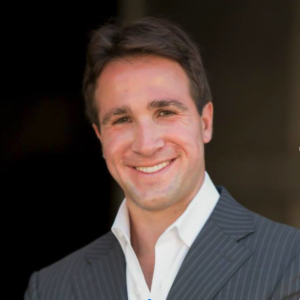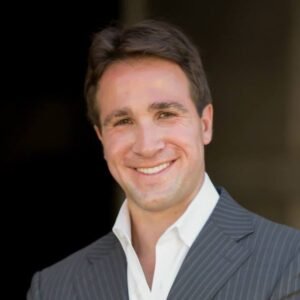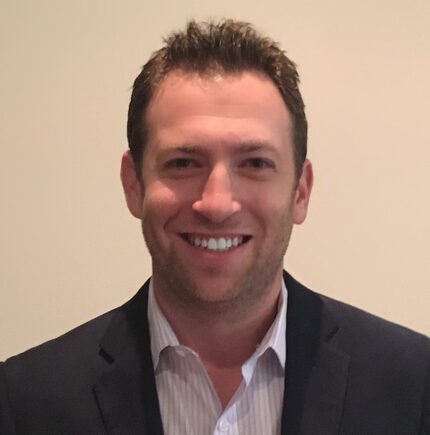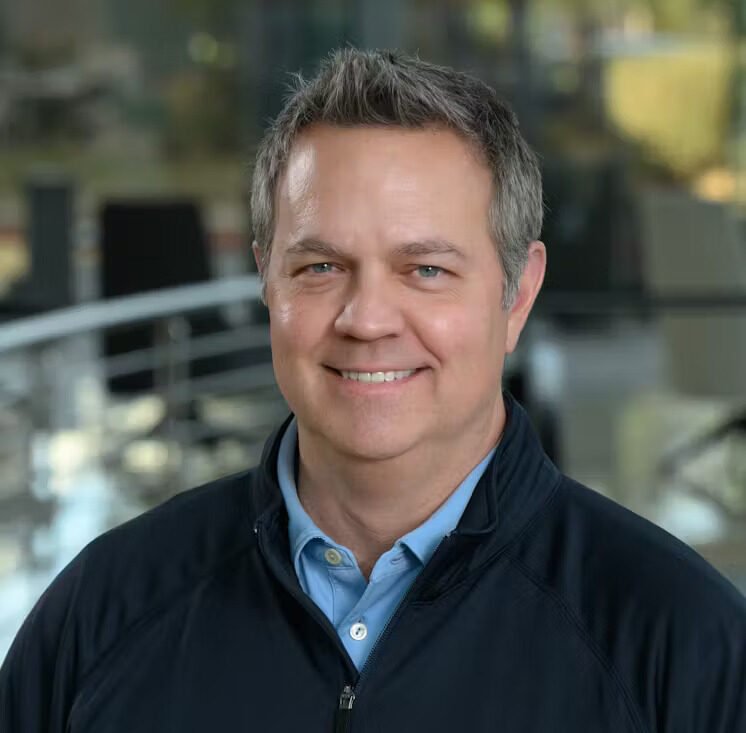
I recently went spoke to Emily Field, Bill Schaninger, and Bryan Hancock. Emily is a partner in McKinsey’s Seattle office, Bill is a senior partner in McKinsey’s Philadelphia office, and Bryan is a partner in McKinsey’s Washington, DC, office. They co-authored the new book Power to the Middle: Why Managers Hold the Keys to the Future of Work.
Adam: Thanks again for taking the time to share your advice. First things first, though, I am sure readers would love to learn more about you. How did you get here? What experiences, failures, setbacks, or challenges have been most instrumental to your growth?
Emily: I feel incredibly grateful and fortunate to be where I am in my career. I attended Georgetown University, where I learned how to think deeply and problem-solve. I sort of fell into consulting because a classmate suggested I apply to consulting firms when I was a senior. I didn’t know what consulting was, and I really questioned whether I had anything to offer. No one in my family or network had worked in consulting, and I didn’t have an example to follow, but I got an offer and seized the opportunity. By chance, my first project was in the people space – leadership development for a law enforcement agency. The experience transformed me. I realized I got energy from focusing on people and that people are fundamentally critical to any organization’s mission. I sought ways to continue working in the human capital space.
Another formative experience was working on cultural transformations in Germany in 2015 and 2017. I brought significant expertise, but I learned to understand what made sense in my clients’ context and culture. Especially where I didn’t speak the language, I needed to find ways to connect and understand to build trust and be of service. I’ve taken this concept of being a cultural chameleon with me. I have since had the privilege of helicoptering into organizations to support them on their most pressing business and people challenges. Every time, I have the obligation to understand their context and culture to best serve them. I joined McKinsey in 2017 because I wanted to continue to learn and push myself outside of my comfort zone. By following what gives me energy, being a cultural chameleon, and constantly seeking to learn, I’ve built a career I absolutely love.
Bill: My first job was in a residential psychiatric treatment center. We spent our time trying to understand why patients behaved the way they did and helping them change. I then went to graduate school to study talent, organizational change, and analysis — my mission was to understand why people behaved the way they did at work and, again, help them evolve and improve. The common denominator for me has always been understanding why people do what they do and the impact culture, leader behavior, and their own skills can have on their behavior. Power to the Middle focuses on the importance of people leaders in this equation, so it was a natural fit.
Bryan: In the winter of 2004, I was a relatively new manager at McKinsey, and I was assigned to a challenging project with two sets of client executives who didn’t see eye-to-eye. I spent long hours on what I perceived as most important at the time — real-time problem-solving with the executives, developing fact-based presentations and leading the charge on finding other experts who could help bridge the ever-widening gap forming across the two camps. However, my team was unhappy. They were being whipsawed on multiple, often conflicting requests – and I was so busy with the executives that I didn’t make time to really help them. I was too focused on what I could do as an individual and not focused enough on being an effective manager.
After my first son was born prematurely, I left the engagement to be with him in the NICU (he turned out fine!). A seasoned manager came in to replace me. The new manager immediately and dramatically reduced the time he spent with the executives. Rather than trying his best in an untenable situation, he flagged the situation to our leadership, and spent his time with the team, coaching them through the most important analyses. In other words, he was a good manager, even in a tough situation.
I learned from that experience and committed myself to being a better manager. In focusing on doing so, I also saw how important managers were in the growth and success of their teams in every organizational context I entered. Since then, I’ve tried to pass that lesson on. For the five years after I was first elected partner at McKinsey, I served as core faculty for two of our manager leadership programs, during which I stepped away from my client engagements for a week to help counsel a new set of managers at McKinsey. We covered the tactics of managing well, and I worked with each student on their personal career vision and leadership style. I always shared the story of my early, challenging managerial experience – where being a better manager would have made a huge difference.
Adam: What do you hope readers take away from your new book?
Bryan: The headline is two-fold: First, the current perception of the middle manager role is outdated, driven by a swell of trends that have led to a profound misunderstanding of the manager’s purpose. In the earlier part of the 20th century, middle managers held a position of stability and institutional knowledge that made them essential to an organization’s day-to-day operation. They were critical in translating corporate direction to their teams in the pre-internet era. The past 25 years have been the opposite. Productivity gains fueled by technology (e.g., “manager self-service”), the desire for superstar leaders, and the ease of sharing information directly with teams instead of through their leaders played a part in minimizing the perceived importance of middle managers.
Second, companies can take tangible steps to repair this, but unleashing middle managers’ true potential will take a lot of dedicated effort. It’s not just about rebundling their duties; the scope of their roles needs to be completely reimagined.
Emily: That’s my biggest takeaway from the book: the current work environment is no longer strictly defined by titles like manager. Today’s organizations are more fluid.
Instead, organizations need their middle managers to play four primary roles: visionary, architect, coach, and catalyst. These roles complement each other and create a new dynamic where leaders’ power is shared with managers and, in turn, their reports. The world of traditional command-and-control leadership is over. Today’s leaders should be ready to embrace a talent-centric mindset.
Bill: Exactly. The new world of work is going to rely on middle managers to break out of their current roles. That’s the takeaway for me. We wrote this book to show how middle managers have become misunderstood AND build a case for their fundamental involvement in the future of work. I want readers to walk away with an understanding that transforming the way middle managers are perceived can only be done by transforming how their role functions.
Adam: What do you believe is the future of work?
Bryan: There will be no singular future of work. It’s going to change based on the company, their needs, their industry, and more. The future of work for a Fortune 500 company with 10,000+ employees is going to be different from the future of work for a smaller regional business. However, there are aspects that will be common throughout all of them: including increased use of automation (including AI) and remote work. For example, a recent McKinsey Global Institute study found that “current generative AI and other technologies have the potential to automate work activities that absorb 60 to 70 percent of employee time today.” While we don’t believe that this means that 60 to 70 percent of workers are going to be automated away, we do believe that routine work will be increasingly supported by technology. The work that remains will increasingly require social, emotional, and cognitive skills (i.e., human skills) — the exact types of skills where people managers and people leadership make the biggest difference.
Bill: I absolutely agree. These common challenges are only going to reinforce the need for high-value talent. Companies of all sizes and across industries will have to eliminate rote tasks and innovate to continue growth. However, the actual details of how can only be carried out by those with a deep, intricate understanding of what happens at the ground level. Those people are middle managers. As AI, automation, and other technologies are increasingly adopted, I see a future of work with a dynamic org chart that empowers middle managers to match the right tools to the right roles, helping optimize how businesses operate.
Emily: I would add another layer – the role that purpose will play in the future of work. We know for a fact that today’s workers consider benefits beyond the amount on their paycheck—70 percent of employees say that their sense of purpose is defined by their work. They want to feel valued by their company and manager. They want to be part of a trustworthy and caring team. They want more control over their work and flexibility on where, when, or how it gets done. Purpose comes through in all of these scenarios.
So, in a way, I see purpose as the future of work. How companies convey this to their employees will be key to their success.
Adam: What do you believe are the defining qualities of an effective leader?
Emily: Building on purpose, communication is one clearly defined trait that all great leaders should have. Strong leaders can effectively connect people’s work to the company’s purpose. They don’t receive a message from executives and just pass it on for their team to interpret. Instead, they tailor that message to the team. This way, employees feel informed about how their work is connected to the larger purpose. Effective leaders understand this and know how to bring purpose through in a way that clearly shows the impact of their work. It’s a simple idea, but it has the power to strengthen teamwork and build loyalty.
Bryan: In a similar vein, the best leaders I’ve worked with in my career have been great at connecting the dots. When they don’t have the answer, they’re able to identify someone who does and ask them to help. We sometimes have this image in our head that a great manager or senior leader knows the answer to every issue. Really, they just know someone else who does. That’s why great leaders are also strong recruiters. They know how to get someone in the door who can address a need, and then they can clearly demonstrate the value of that person joining the team.
Emily: Essentially, effective leaders are problem solvers – and problem-solving can come in a variety of forms. It may be as simple as identifying someone else who can help. It can also require higher-level thinking, such as recognizing that a workflow isn’t efficient and identifying a solution. Or seeing that a team member might be better suited for a different role and creating a path to get them there. Good leaders solve these problems in ways that benefit everyone. Not so coincidentally, the great problem solvers I’ve worked with have also been some of my best managers.
Adam: How can leaders and aspiring leaders take their leadership skills to the next level?
Bill: Gratitude and positivity go further than you might expect. The act of thanking people is a true win-win for leaders: it doesn’t cost anything and being thanked makes people feel valued. Celebrating small achievements helps set up a positive dynamic in which everyone wants to do better. Positive feedback reinforces desired behavior. This can also help team members develop a sense of self-competence, motivating them to face larger challenges.
This all comes with the caveat to not overdo it. Authenticity goes a long way, and people can tell when their bosses and senior leaders are just following a script without truly meaning what they say. Hone the ability to feel genuine thankfulness and express it in a heartfelt way.
Bryan: If you want to improve as a leader, start by trying to get an understanding of how they are doing as a leader today. This can be done formally (e.g., 360-degree feedback) or informally (e.g., over dinner with a trusted team member). Then, pick a few practical, specific behaviors to work on over the next several months, and ask for ongoing feedback about them. While that sounds straightforward, it can be very hard in practice because:
-
It can be hard to get honest and authentic feedback–you have to work to create the environment where people feel like they can have the trusted conversation with you.
-
It can be hard to hear feedback — especially if you are on the verge of burnout yourself. So, you have to work on your own ability to receive feedback. This can be a journey onto itself.
-
And, it can be hard to make the practical shifts needed. While there are lots of leadership books and blogs which can provide helpful tips, nothing can replace the personalized coaching one can get from a coach, from HR, from a trusted mentor, or from a group of peers.
Adam: What is your best advice on building, leading, and managing teams?
Emily: The person who will ultimately manage the day-to-day operations of their team should be deeply involved in building it. That sounds like simple advice, but managers are often tied up handling other tasks with little time to invest in the recruitment and onboarding of new team members. Then, without visibility into the process or perhaps just a short interview with a candidate, they’re left to decide who should be hired. We propose bringing middle managers into the recruitment process from the very beginning. By giving them more ownership of the process—and more time for it—they can make more informed choices and potentially prevent turnover further down the line.
Bryan: The key to building a great team is having a great manager. Organizations should be thoughtful about who they select as managers – and they should pay as much attention to a potential leader’s ability to manage as they do to their subject matter expertise or technical skill. Too often, great individual contributors are put into managerial roles – without having the managerial skills or interest. Companies should have tracks where great individual contributors – without interest in being managers – can continue to grow in pay and responsibility without ever managing.
Adam: What are your three best tips for emerging leaders and for senior leaders?
Bryan: My tip for senior leaders is to give emerging leaders space to grow. Avoid drowning emerging stars with tasks that hamper their career path. Give them the license to explore new projects, processes, or technologies in their own way. Don’t pile on the work just because you know they’re capable of doing it. Give them fewer but tougher challenges so they don’t burn out from trying to juggle all the balls at once. If these emerging stars are managers, they need to be managing people, and senior leaders need to trust them to do so in the way that suits them best. Giving high performers a license to figure out what works for them can create a unique, attractive culture.
Emily: Senior leaders also need to reframe how they reward their managers. They’ve been stuck on promoting star performers out of positions where they thrive because that’s what has come to be expected over the years. Yet, if the promotion isn’t the right fit, no one wins. The organization loses someone who was well-suited for their previous position—as a manager, for example—and now they’re left to fill the gap. We all find different things rewarding. Senior leaders should ask emerging leaders how they prefer to be rewarded, rather than simply following the playbook from the past few decades.
If companies don’t change the way they reward managers, they will lose them—and in a cascading effect, the people who worked for them. Company rewards and culture are now on full display thanks to sites like Glassdoor. Workers know what it’s like to work at a company before they even apply, so ensuring that those who do stay are rewarded accordingly will pay off in the long term.
Bill: My tip is to change the calendar-driven check-in cycle. The modern work experience is not dictated by a three- or six-month period; it’s a year-round responsibility. It’s an impossible task to sum up months of accomplishments in a single meeting, and it completely ignores how we structure our workload. In some industries, the goals change multiple times a year, to the point that those set six months ago might not even apply anymore. Not to mention, projects are rarely steady for months on end.
I’ve heard people say that workflows in and out like the tide. There’s high tide where things are especially busy, and there is low tide where things are a bit slower. Senior leaders should recognize this and check in with team members regularly to get an idea of their performance on a consistent basis, rather than pile everything into one conversation.
Adam: What is the single best piece of advice you have ever received?
Emily: I credit Bill with some of the best advice I have ever received. At a moment when I was at a crossroads, deciding whether to take on a new opportunity I was particularly apprehensive about, he asked me: “Do you like working with the people who would be on the team? Do you learn from them?” Since we spend most of our waking hours working, Bill’s advice has stuck with me: “Work with people you like, from whom you learn.” It makes the time spent working so much more fulfilling and downright fun.
Bill: I received an important reminder that has shaped the way I think about people issues from a client I was serving. We were close but not quite to the cost-cutting targets we had set. To get there, we were about to start looking at cutting things like coffee, snacks, holiday parties, and summer picnics. The client (who set the original target) thanked me for the work and decided to go no further. When I asked why, she reminded me she wanted to have something worth running when it was all done, and it was important to her to maintain some of the things that made them, them. It was a wise choice.
Bryan: I was encouraged by one of my early team leaders to always ask, “What makes this problem hard?” Clients rarely engage our firm when the answers are straightforward – so if it seems like the answer should be easy, we need to dig further. Often, the things that make solving a challenge hard are related to human elements: how to find the right talent for the new strategy, build capabilities, and shift mindsets. As I reflect on the advice, our manager was prompting us, in a consulting-specific context, to be curious and not judgmental. I find that a helpful mindset in every situation.








